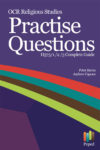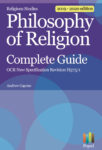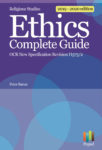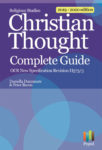Guidelines: a new section
September 8, 2014
Guidelines are here to help you!
I have created a new section on the site called ‘guidelines’. The idea here is, much like my book ‘How to Get an A Grade’ I try to distil everything the examiner has said on a particular question, whilst looking critically at the examiner’s comments and adding my own observations (marking the examiner, why not?!). At the same time the aim is to post on the site an answer to the very same question done by a student in the actual exam. By the next couple of weeks I hope to complete the guidelines you will need for AS and A2 syllabus areas this term. The guidelines can be used by teachers and by students in the following ways:
1. What the examiner says about a question itself needs interpreting. These comments often read as a series of (sometimes very generalised) assertions and even on occasions contradict each other in the course of the advice given. If you want to understand what I mean, read my latest post on guidelines on a question on moral relativism.
2. Students often say to me that they want to know what a really good answer reads like. Well, one way to find out is to read carefully the guidelines which examiners give to the people doing the marking. If the advice is crystal clear than we should get clear mark schemes and consistency – and this after all is what we strive for.
3. As teachers I think we need to model analytical writing. Analytical writing is of a certain kind – and has certain measurable features. For example, it needs to be clear, and clearly stated, what your argument is (I prefer this to be done in the first paragraph). Secondly, the ambiguities in the many technical terms used in philosophy and ethics need to be explored and explained. A classic example again is the term ‘relativism’ which means different things. Unless we are clear which meaning we are talking about, we end up with muddle, and even more importantly – the different meanings contradict each other. For example, utilitarian is relativistic under one meaning (consequentialist) and absolutist under another (objective). No wonder answers on relativism often end up with weird (even non-sensical) assertions such as “relativists argue there is no such going as right and wrong” – I’m quoting the chief examiner here. Under a number of definitions of relativism this is nonsense. Even to argue that ‘all values are cutlural’ does not entail the view that ‘cultures have no view of right and wrong’ a big, mistaken, non sequitur!
4. Students – it’s worth deciding now whether you want to go for an A grade. The resources on the site are here to help you, as are the books written by our community of leading authors. We continue to give 90% of what we do away for nothing (eg the contents of this website)! However, we have written theses books as a community of teachers (we have ten or so authors now) because we believe that the textbooks do not always do a good job. So we try in our coursebooks and revision guides not to gloss over tricky ideas – such as the idea that relativism is such an ambiguous term that unless we expose the three or four basic meanings we can never really produce a coherent answer on an exam question.
5. I do still teach – usually one to one these days – as well as in larger groups of fifty to one hundred people. The biggest lesson I learnt after I left full time teaching in a school was this: I never mastered the art of knowing by the end of each lesson how much my students really understood. In other words, I never spent enough time in that crucial last ten minutes assessing how much I knew my students knew. I didn’t in short have enough assessment tasks built in. More on this in a future blog, but meantime, keep your comments coming!
Best wishes
Peter
Further – read my article written for Dialogue magazine a couple of years ago on the "Muddle of Relativism".






0 Comments